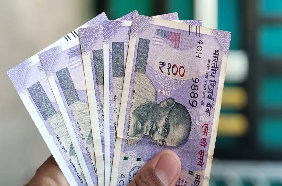As the 7th Pay Commission’s 10-year tenure draws to a close, expectations rise for the formation of the 8th Pay Commission. Around 12 million central government employees and pensioners eagerly await two key announcements: the formation of a new Pay Commission and potential hikes in pensions and salaries. The government remains has not yet reviled the timeline for establishing the 8th Pay Commission, but various media reports hint that its formation is imminent. The 7th Pay Commission’s tenure is set to conclude on December 31, 2025.
Under the pay commission, public sector employers determine employee salaries based on designated pay scales, with additional components. Notably, one of the most important components among these is Dearness Allowance (DA). Let’s see how DA is calculated as of now.
How Dearness Allowance Is Calculated?
To mitigate the effects of inflation, the government provides Dearness Allowance (DA) to its employees as a supplementary compensation. DA is typically calculated and revised bi-annually, in January and July, to offset price increases during each financial year. The Government revised the formula for calculating Dearness Allowance in 2006. Currently, the DA is calculated as per the formula, given below:
For Central Government Employees- DA% = [(Average of AICPI (Base Year 2001 = 100) for the last 12 months – 115.76)/115.76] x 100
For Public Sector Employees- DA% = [(Average of AICPI (Base Year 2001 = 100) for the last 3 months – 126.33)/126.33] x 100
(AICPI stands for All-India Consumer Price Index.)
Let’s understand this formula in real world and numeric terms. At 53% DA, any employee with the monthly pay (Basic + DA) of Rs 33,000 is entitled to get Rs 11,660 as DA every month. This takes the monthly pay (Basic + DA) of that employee to Rs 33,660.
Notably, the Union Cabinet chaired by Prime Minister Narendra Modi on October 16, 2024 increased the dearness allowance (DA) and dearness relief (DR) for central government employees and pensioners by 3%. This took the DA and DR for the central government employees and pensioners to 53%.



